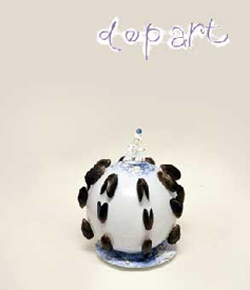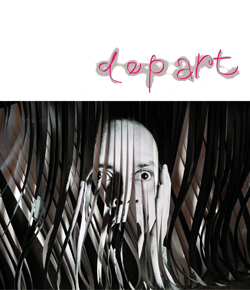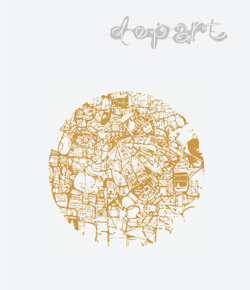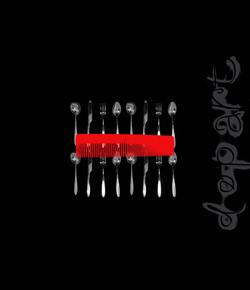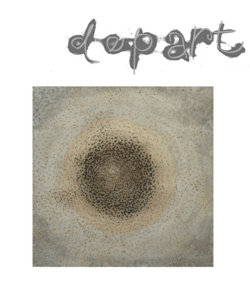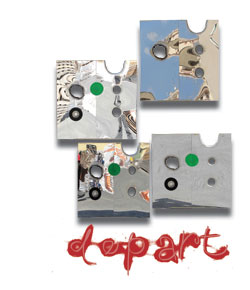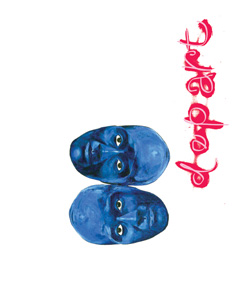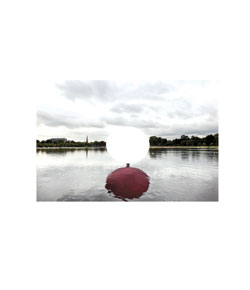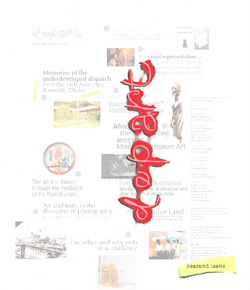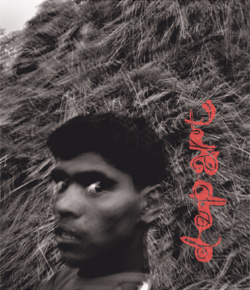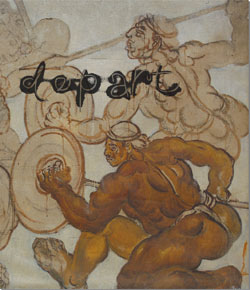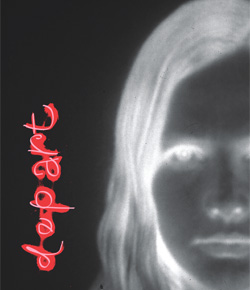newsscape
Husain, Kolkata and unskeined time

‘R-e-creating Husain's Kolkata', the unique workshop recently hosted by CIMA and Indian Art Collectors as a part of CIMA awards show, had been, at its simplest, an attempt to make sense of the way in which signification, always unfixed and tremulous, travels through time and space and itself becomes a process of continuous displacement. The seven young artists, students of Indian Art College of Kolkata who participated in the workshop under the mentorship of Samindranath Majumdar chose, as their primary referential frame, those of M F Husain's paintings which deal closely with Kolkata, its history and culture. For Husain, Kolkata had been young and old, contemporary and ancient: one of the major challenges for the artists was, therefore, to deal with layers of time. This process involved delving deep into cultural memories of the city, those invoked by Husain in some form or the other in his works, and then resettling them in variant contexts. It is, as if, the memories/anecdotes/descriptions of Husain are unlocked and released into independent new lives.
I was fascinated by Sampurna Naskar's very interesting take on Husain's Guru, featuring the iconic Bengali film personalities Uttam Kumar and Suchitra Sen. While Husain painted the duo in silvery-white on a brown background, Sampurna uses image transfer and pyrography on wood to create a series of filmstrips, capturing those most memorable movie moments of the silver-screen idols that had stayed ingrained in the cultural imagination of Bengal since the ‘50s and the ‘60s. Sampurna's work goes almost like a commentary, supplementing the eponymous title of Husain's work: it is, as if, he situates Husain's Uttam Kumar within the symbolic frame of the profession that made him Guru (the boss/leader) to the people of his times. Each of the single frames contains a still, from several of Kumar's memorable films, and the frames are meant to be viewed both as a composite filmstrip and also as individual moments, for the journey of being and becoming Guru rests on such landmark moments, which are encased within the images of a running filmstrip. The filmstrip acts both as a definitional background and a containment for the idol.
Riding Out by Subhankar Chakraborty is another notable work which hinges on Husain's The Babu about to ride out. Husain painted the white dhoti-clad babu holding a flower mounted atop a bicycle, possibly off to a clandestine rendezvous, while the lady of the house is occupied with her child, her cooking chores, and only a part of her man, that too in reflection. This painting of juxtaposed worlds had already travelled in time, as the concept of the amoral 'babu' belongs to 18th century Bengal but had remained subversively iconic ever since. In our own times, sightings of a dhoti-clad figure riding a bicycle is indeed a rarity, and Chakraborty catches its close resemblance in milk vendors – the dhoti-clad dudhwallahs, usually from Bihar and Uttar Pradesh, who ride cycles to deliver milk to their clients' doorsteps. With milk cans strewn around, the milk vendors line up in a gesture of protest, exuding a sense of diminution: the work treats, with a deep sensitivity, the process of displacement of an image from an area of privilege to that of disempowerment.
Gopal Chakraborty's Tribute to Husain's Padma Nadir Majhi involves an interesting conceptual transference. Based on Husain's Padma Nadir Majhi which was obviously inspired by Manik Bandyopadhyay's novel of the same name, Husain's response to this literary landmark is translated by Chakraborty into an actual, three-dimensional form of a book with several pages. An added dimension is provided by the incorporation of illustrations which are actually stills from the film by Gautam Ghosh based on the same novel. These successive shifts of signifiers bring together referential frames from varied media which overlap, yet claim and retain their autonomous spaces.
On Husain's Gnanadanandini by Debojyoti Das starts off from Husain's vision of Gnanadanandini Devi, (Rabindranath Tagore's sister-in-law and one of the earliest exponents of women's awakening) and comes up with a canvas that bemuses us with the treatment of time and space. Gnanadanandini in a phaeton is juxtaposed with Husain himself, who appears imposing, towering over his own subject, while a few contemporary cabs seen at the distance convert the spatial gap between the phaeton and the cabs into a temporal one. Husain is seen behind the phaeton as well, this time sitting down to survey his painting. The treatment of different levels of time in terms of pictorial space demands close attention and involvement on the part of the viewer.

Notable, too, is 1911 by Srikanta Roy which is an expressionistic reworking of Husain's version of Mohan Bagan Club's historic win in the football match against East Yorkshire regiment where the players from Bengal went barefoot against a side in full football gear. Throngkiuba Yim's recasting of Husain's vision of Mother Teresa, Do Good Anyway and Agnimitra Das's Tribute to Husain's Ritwik Ghatak both experiment with interesting surfaces and create open-ended narratives that stay and grow with us.
Samindranath Majumdar, who mentored the workshop with profound insight and sensitivity, deserves to be specially congratulated. The workshop offered a rare opportunity, not only for the participating artists, but also for the discerning viewers, to ponder upon and explore the links between vision and the visual; defining too, in a sense, the points and counterpoints in the very construction of culture.





